While taking bird photographs, I felt like I wasn’t achieving the kind of images I wanted to capture. I recently upgraded from a Canon 18-135mm lens to a Canon 55-250 lens. I got by with the other lens, but I want to take my photography to the next level. I also upgraded to a Canon Rebel T6i camera a couple of years ago now and I think they will make a perfect pair. The following bird photos are from yet another snowstorm we experienced this month here in Maine and some different angles of my camera and new lens.
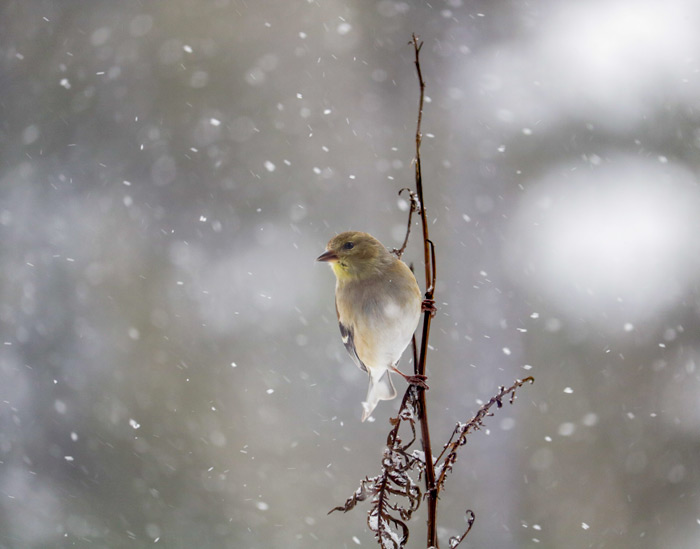
The American goldfinch Spinus tristis is a small North American bird belonging to the finch family.
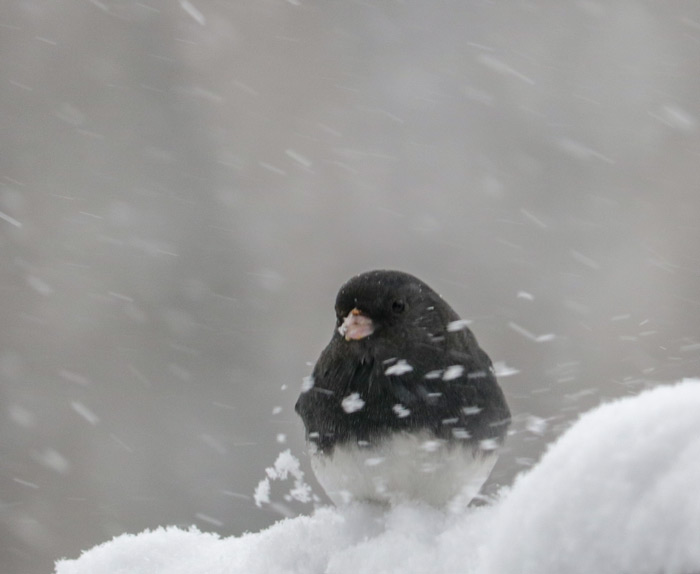
Dark-eyed juncos Junco hyemalis are a species of juncos, a genus of small grayish American sparrows.
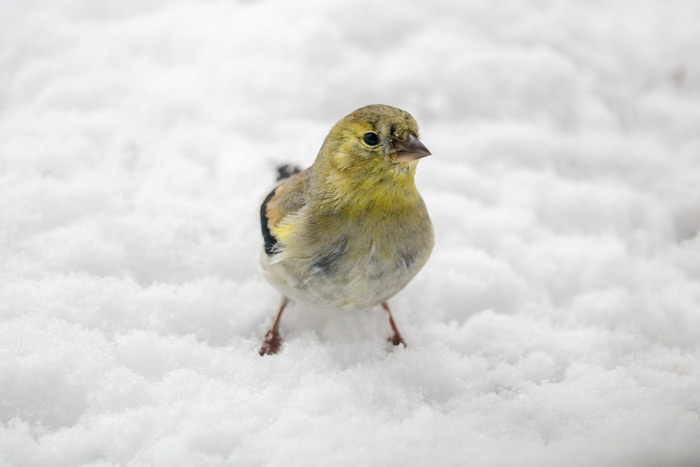
The American goldfinch is a migratory bird, that can be found from mid-Alberta to North Carolina during the breeding season and from just south of the Canada–United States border to Mexico during the winter.
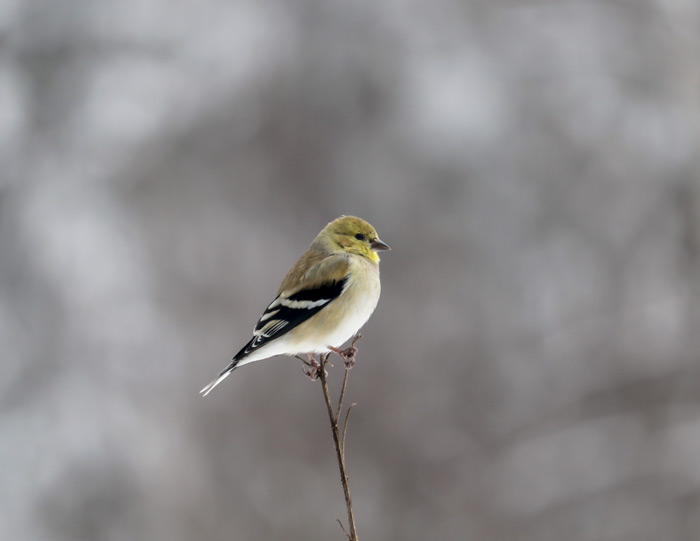
The American goldfinch is a small finch with a short, conical bill and a small head, long wings, and a short, notched tail.
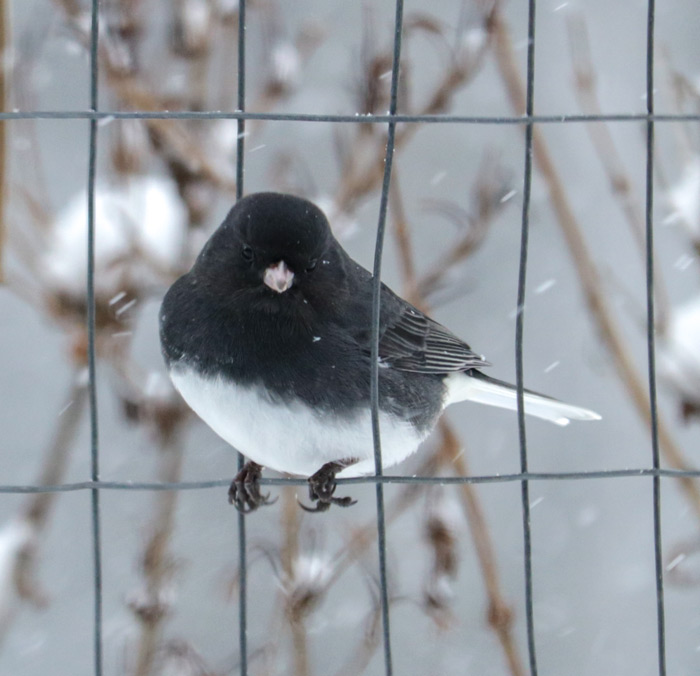
The dark-eyed junco is a medium-sized bird with a rounded head, a short bill, and a fairly long tail.
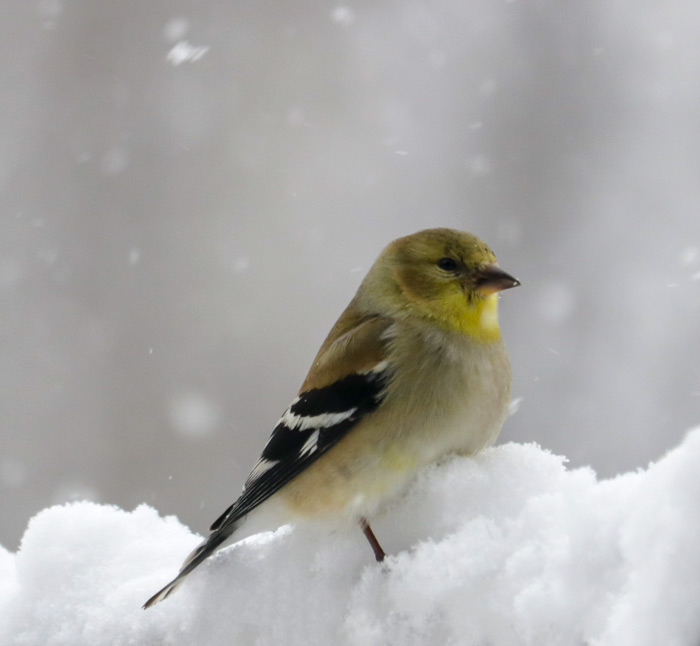
During the spring and early summer, male American goldfinches are bright yellow with black foreheads, black wings with white markings, and white patches both above and beneath the tail. Adult females are a duller yellow beneath and an olive color above. Winter finches are a drab, unstreaked brown, with blackish wings and two pale wingbars.
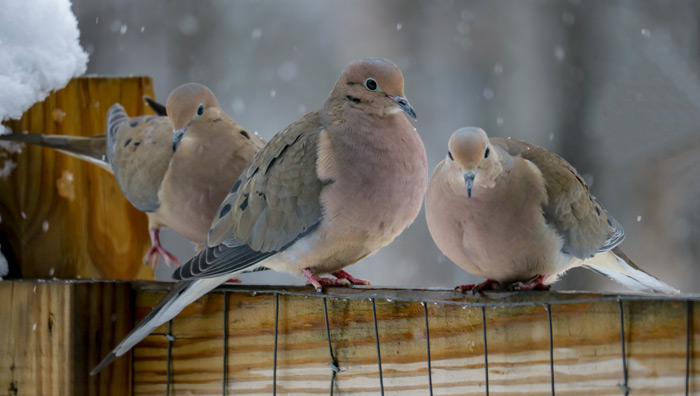
Mourning doves Zenaida macroura belong to the dove family, Columbidae. These doves are also known as the American Mourning Dove or the Rain Dove and mistakenly Turtle Dove, and were once known as the Carolina Pigeon or Carolina Turtle Dove. Mourning Doves are slender, with a long and pointed tail and light grey and brown, and generally muted in color.
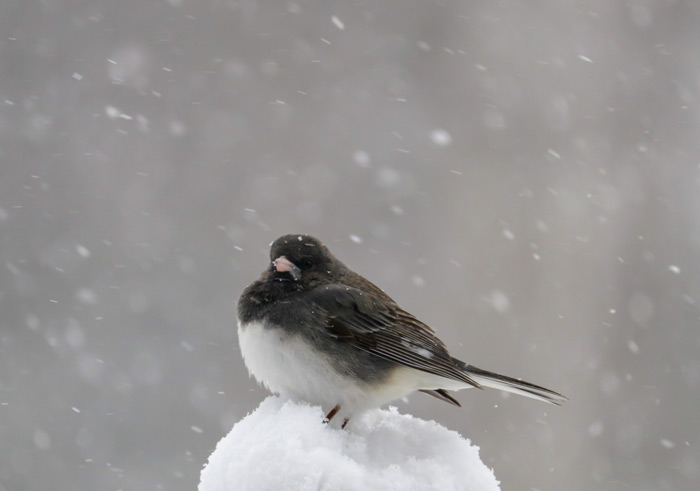
Dark-eyed juncos can vary due to region, but in general are either slate-gray or brown, with white bellies and white outer tail feathers that flash distinctively while in flight and while hopping on the ground.
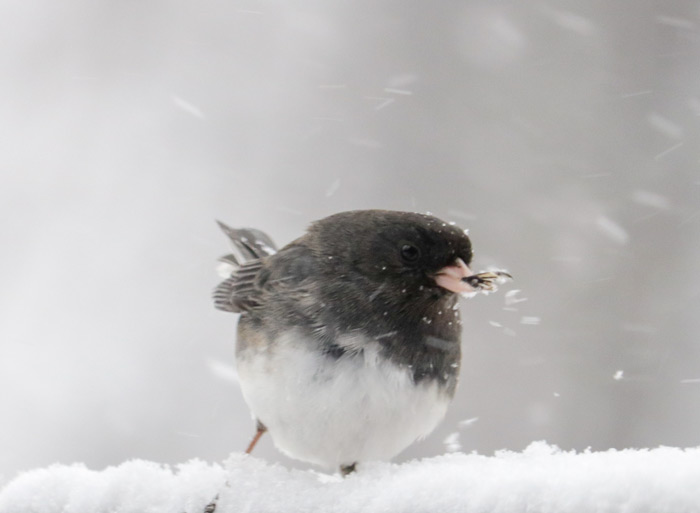
Dark-eyed juncos are ground feeders and are often found hopping around the bases of trees, shrubs, and bases of bird feeders searching for fallen seeds.

Dark-eyed juncos have a high, short chip note that they give in rapid succession when they fly and more slowly while they are looking for food.
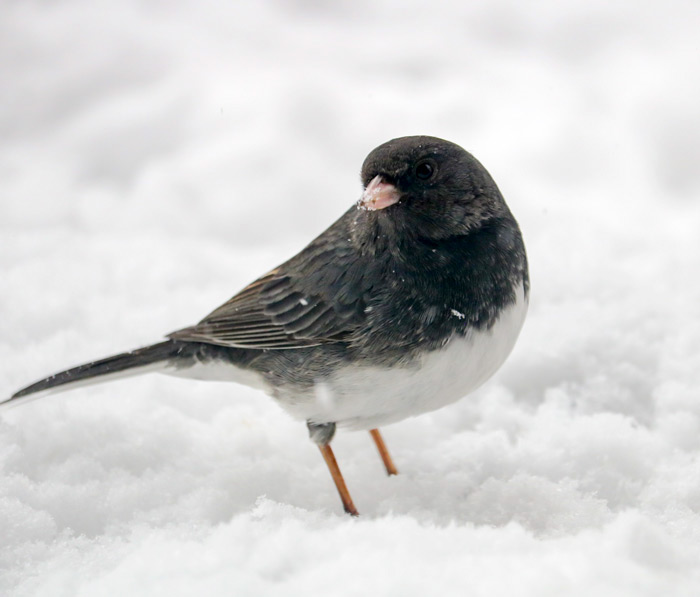
Dark-eyed juncos can be found all over the United States and Canada.
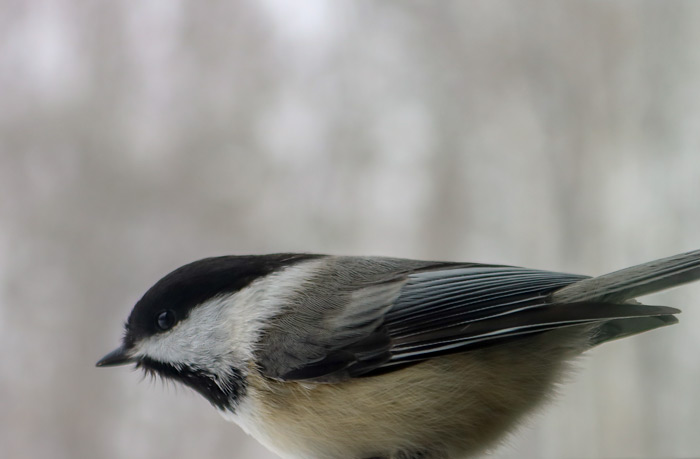
The black-capped chickadee is a small, nonmigratory, North American songbird that lives in deciduous and mixed forests. These tiny birds have short necks and large heads, with a spherical body shape and short bills. The black cap extends down just beyond the black eyes, making the small eyes tricky to see. The cheeks are white and the back is a soft gray. The wing feathers are gray and edged with white. These birds seldom remain at bird feeders, except to grab a seed and consume it elsewhere.
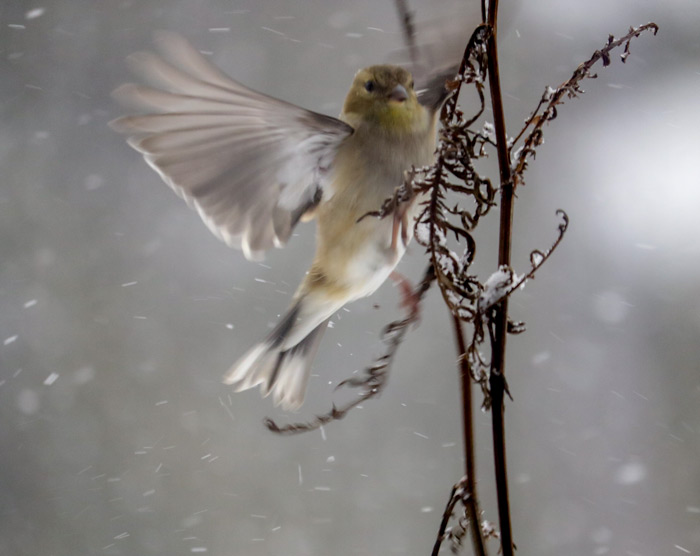
American goldfinches eat seeds almost exclusively. At bird feeders, they prefer nyjer and sunflower.
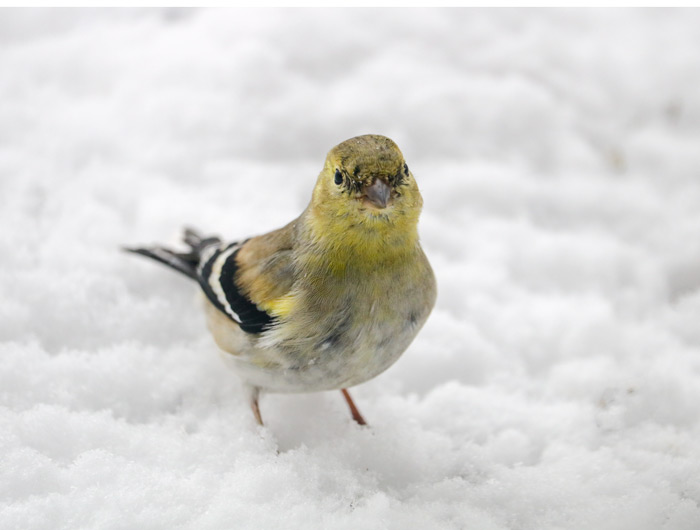
American goldfinches can be found at bird feeders any time of year, but most abundantly during winter.

A Canon 55-250mm lens
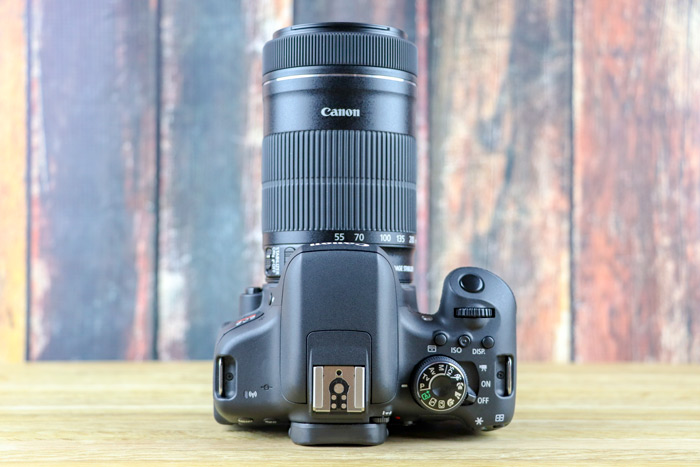
An upright view of a Canon T6i camera and Canon 55-250mm lens
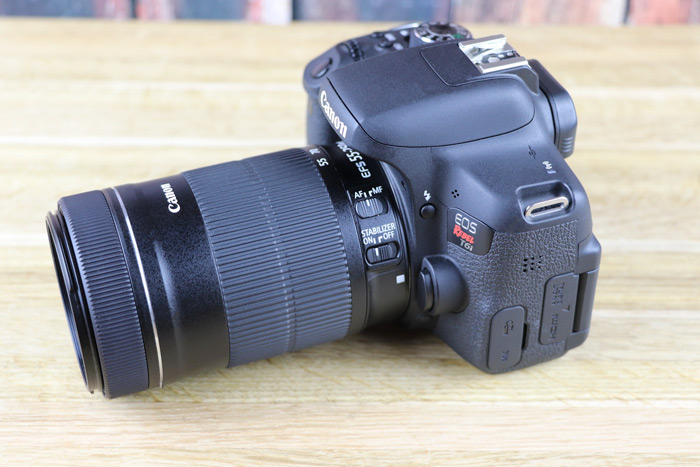
The Canon 55-250mm lens has a telephoto zoom range and image stabilization

The Canon 55-250mm lens is sharp and focuses very closely

The Canon 55-250mm lens is compact, quiet and light-weight

The Canon T6i camera touch screen
Leave a Reply